
Introduction
In the vast world of nature, there's a fascinating concept called the Doctrine of Signatures. This idea suggests that the Creator left clues in the appearance of things, like a signature, indicating their potential benefits for us. So, when we say "you are what you eat," it's not just a saying – it means that the things we consume shape our bodies.
In modern health, we often turn to doctors when we're unwell. You've probably heard of Medical Doctors (MDs), who use medicines and surgeries. But there's also another type called Naturopathic Doctors (NDs). They focus on using natural methods like diet, herbs, and exercises to promote healing.

Here's the interesting part: Modern medicine often treats symptoms, but it might not always address the root cause of health issues. That's where the Doctrine of Signatures and paying attention to what we eat come into play. It's about understanding that our overall well-being is closely tied to our dietary choices.
As we explore these ideas, it's crucial to recognize the significance of what we put into our bodies. We're blending ancient wisdom (Doctrine of Signatures) with the practices of today's health professionals (MDs and NDs). Each approach has its own strengths, but they share the common belief that nutrition plays a vital role in our health. So, the next time you choose what to eat, remember that it's not just about satisfying your hunger – it's about nurturing your body and overall well-being.
Parallels
In our constant exploration of the world, a profound revelation unfolds: the interconnection that binds existence. The ancient maxim "as above, so below" resounds with veracity, prompting contemplation on whether recurring patterns are mere coincidences or integral components of a meticulously crafted grand design.

We observe and find parallels all around us. Think about roots of trees (below),the branches (above) and how they are similiar to our lungs. Take a look at our fingerprints and tree stumps, or the swirls of galaxies and the way our hair grows – even hurricanes follow similar patterns. These recurring patterns extend to the food we consume, revealing interconnectedness in the nutritional components derived from nature.
Considering the above, we linger in contemplation: Are these resemblances coincidental, or do they serve as markers of a purposeful and sublime orchestration within the grand design of the universe? Are these similiarities at all by chance, or is there a purpose behind these recurring designs in the universe?
Nature proposes that certain foods resemble specific body parts, potentially indicating health benefits for those parts. Essentially, it's like nature using symbols to give us hints about the potential advantages these foods might offer. Let's explore how the appearances of certain foods could be connected to their potential benefits for our well-being.
Tomatoes (Resemble the Heart):
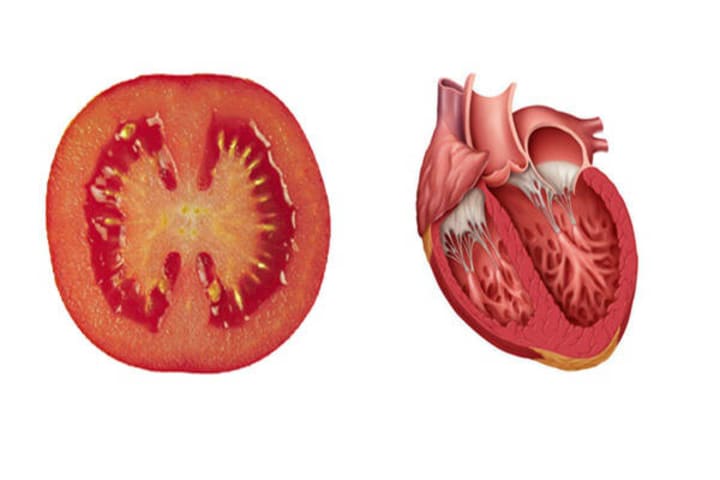
Among the array of fruits and vegetables, tomatoes are distinctive not just for their bright red color but also for their heart-like shape, resembling chambers of the heart. This visual resemblance, according to the Doctrine of Signatures, hints at a potential connection to heart health. Nature seems to be signaling that tomatoes could play a role in promoting cardiovascular well-being. Beyond their aesthetic appeal, tomatoes are rich in lycopene, an antioxidant recognized for its cardiovascular benefits, making them a flavorful addition to our meals with both visual and nutritional significance.
Walnuts (Resemble the Brain):
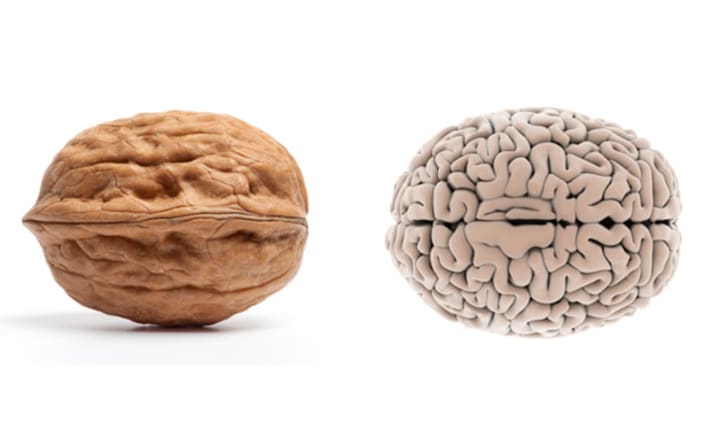
The design of a walnut's shell has sparked the belief that it might have brain-boosting properties. Shaped like a miniature brain, walnuts are not only visually intriguing but also nutritionally rich. Packed with omega-3 fatty acids, walnuts contribute to cognitive function and are often considered a brain-friendly snack. The correlation between their appearance and potential benefits for the brain adds an extra layer of fascination to their inclusion in a wholesome diet.
Beans (Resemble the Kidneys):
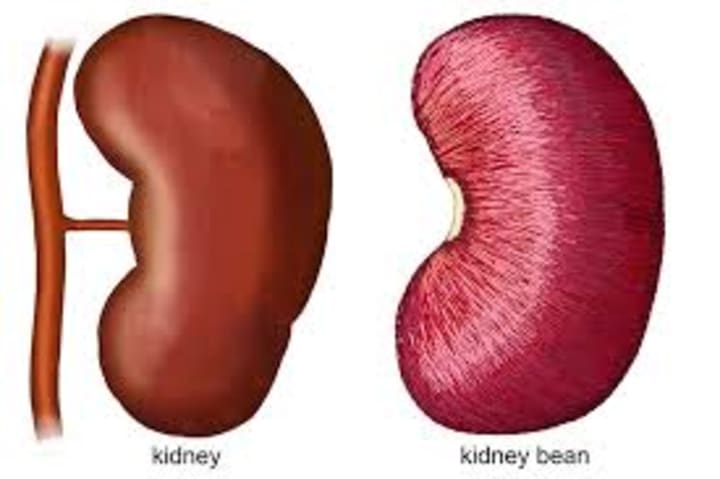
Beans, with their kidney-shaped form, draw attention to a potential connection with kidney function, as suggested by the Doctrine of Signatures. These humble legumes, beyond being a versatile and nutritious food source, may offer benefits to our kidneys. Rich in fiber and plant-based protein, beans contribute to overall health and well-being, aligning with the visual symbolism of their shape.
Avocado (Resembles the Uterus):
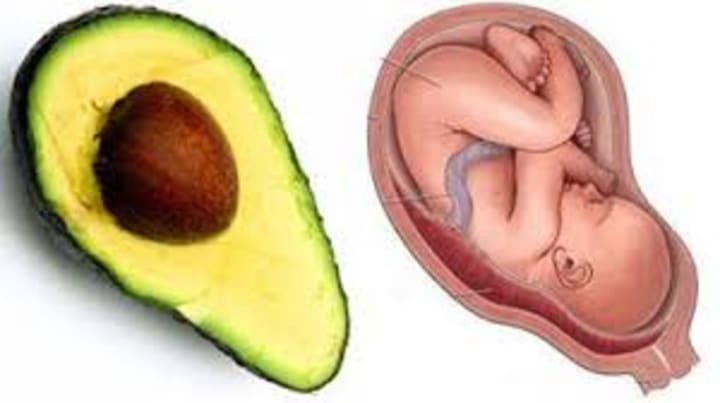
The avocado, with its distinctive shape resembling the uterus, invites contemplation on potential benefits for women's reproductive health. Beyond its visual metaphor, avocados are nutrient powerhouses, containing folic acid crucial for fetal development during pregnancy. While the association with the uterus is symbolic, avocados bring essential nutrients to the table, adding a touch of both visual symbolism and nutritional richness.
Grapes (Resemble the Lungs):
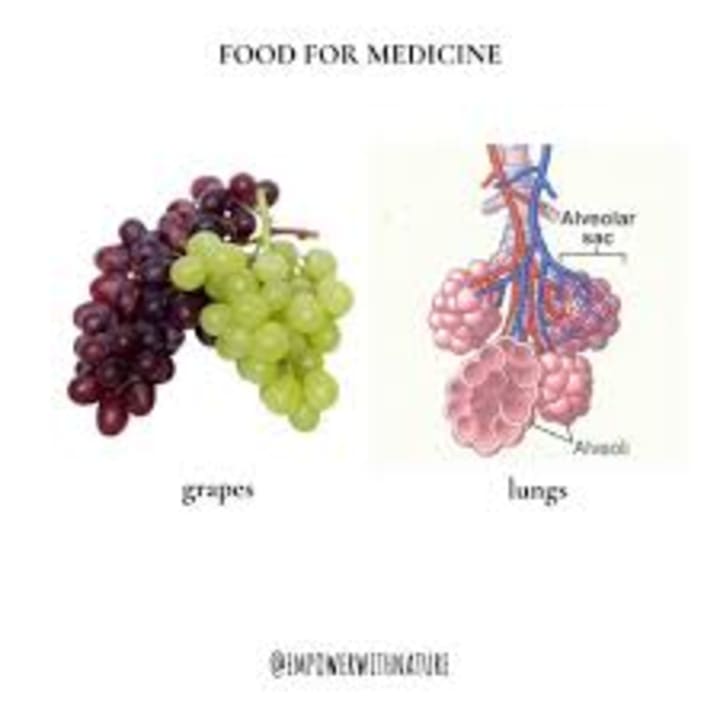
Grapes, arranged in clusters that bear a striking resemblance to lungs, suggest potential support for respiratory health according to the Doctrine of Signatures. Packed with antioxidants, grapes contribute to lung health and overall well-being. Beyond their visual connection, grapes offer a sweet and nutritious addition to our diets, showcasing nature's intriguing interplay between form and potential function.
Mushrooms (Resemble the Ear):
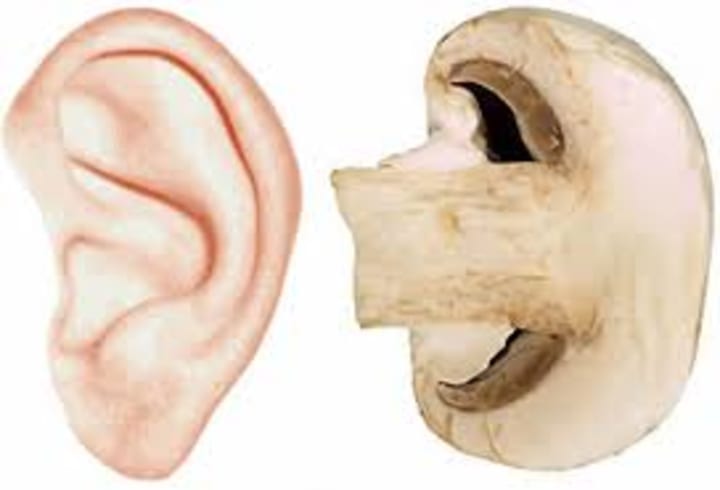
Certain mushrooms, like the morel, share a visual resemblance with the human ear, leading to associations with potential benefits for ear health. While the connection is symbolic, mushrooms are nutritional powerhouses rich in vitamins and minerals with immune-boosting properties. Their unique shape adds an element of curiosity to the exploration of nature's subtle correlations.
Yams (Resemble the Pancreas):
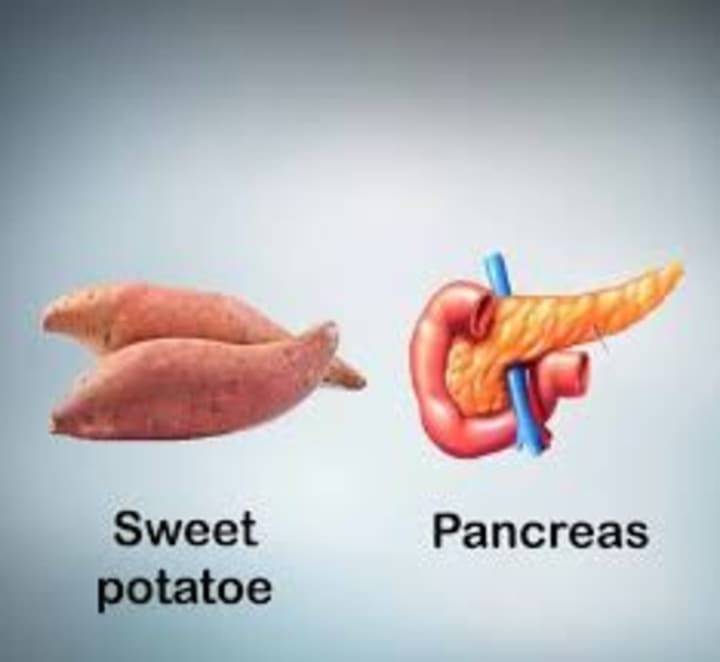
The Doctrine of Signatures links the shape of yams to the pancreas, suggesting potential benefits for pancreatic health. Although the association is symbolic, yams offer a wealth of nutrients, including manganese, that contribute to various bodily functions. Their unique shape adds an element of intrigue to the consideration of potential health correlations.
Carrots (Resemble the Eye):

Bright orange carrots, with their resemblance to the human eye, may be associated with supporting eye health according to the Doctrine of Signatures. Rich in beta-carotene, a precursor to vitamin A essential for vision, carrots not only provide visual symbolism but also offer a nutritious addition to our diets. The connection between their appearance and potential eye health benefits adds a layer of fascination to these crunchy vegetables.
Ginger (Resembles the Stomach):

The knobby appearance of ginger aligns with the stomach, suggesting potential digestive benefits according to the Doctrine of Signatures. Beyond its visual symbolism, ginger has been recognized for its anti-inflammatory properties and digestive aid. A staple in various cuisines, ginger's unique appearance adds a touch of intrigue to its potential health-promoting properties
Sweet Fern Plant (Resembles the Colon):
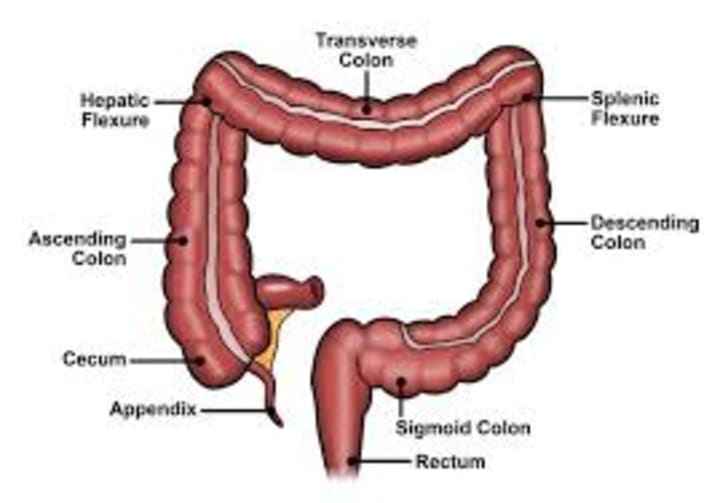

According to the Doctrine of Signatures, the appearance of the sweet fern plant may be linked to potential benefits for colon health. The connection is rooted in traditional beliefs. Nonetheless, the visual metaphor underscores the cultural significance of plants in traditional medicine and their potential contributions to holistic well-being.
Bloodroot (Resembles the Uterus):
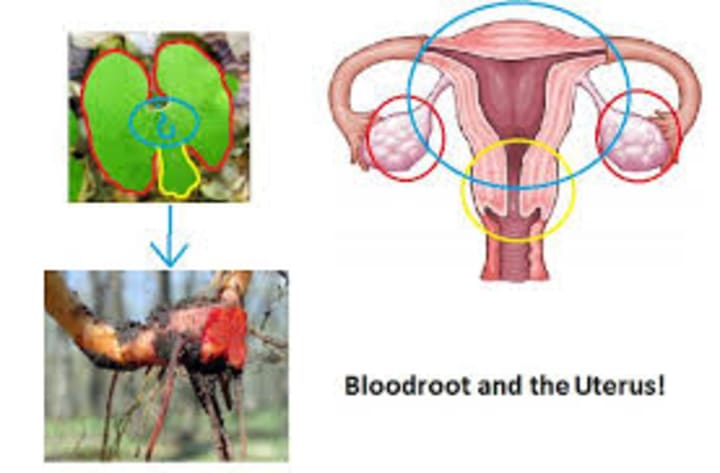
The Doctrine of Signatures associates bloodroot with the uterus due to its appearance, suggesting potential benefits for women's reproductive health. The symbolic association adds a layer of historical intrigue to the exploration of plants and their perceived contributions to women's health.
Celery (Resembles Bones):

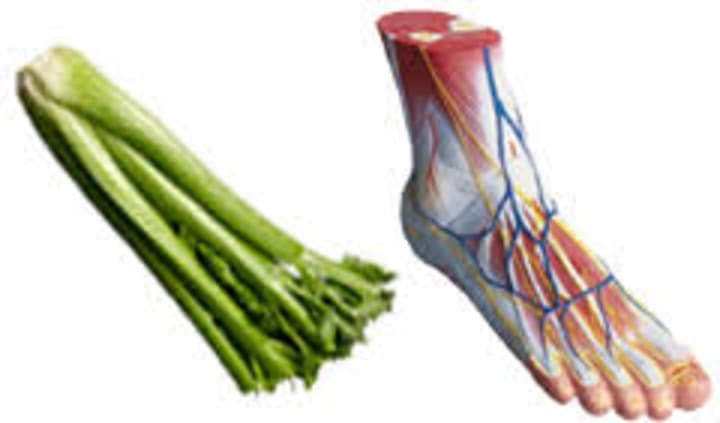
According to the Doctrine of Signatures, celery, with its long, cylindrical shape and segmented appearance, has been associated with bones. While the link is traditional, celery does offer some nutritional benefits. It is a low-calorie vegetable that contains small amounts of calcium and silicon, minerals that are components of bone health.
Citrus (Resemble the Breast):
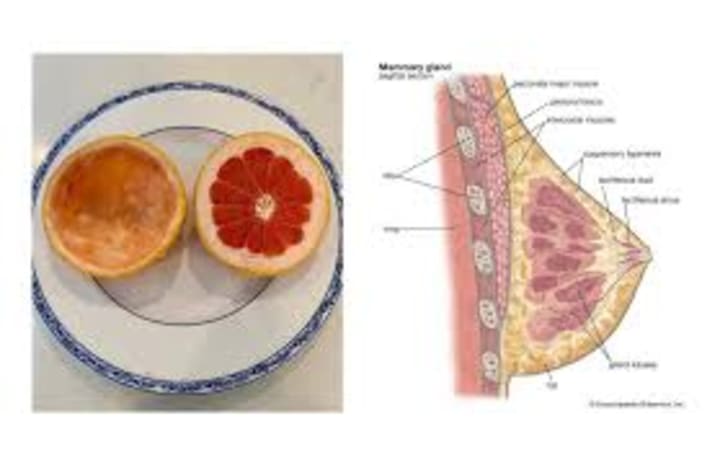

Citrus fruits, including oranges and grapefruits, are known for their high vitamin C content, which is important for the immune system and overall health. According to the Doctrine of Signatures, citrus fruits bear a resemblance to the breast, suggesting a potential connection to breast health. While the visual association is interesting, the health benefits of citrus fruits are primarily attributed to their rich vitamin C content, antioxidants, and other essential nutrients. These fruits contribute to maintaining a healthy immune system, skin, and overall well-being, regardless of the symbolic resemblance to specific body parts.
Summary
In the mysterious dance of nature, the Doctrine of Signatures reveals a fascinating secret code. It's like a language spoken by God in the creation of our Earth. As we look around, we find foods that mysteriously resemble parts of our bodies. It's almost like a parallel between what's above and what's below then whats within and out. The shape of some foods seems to carry hidden messages about potential benefits for our health. It's a reminder to appreciate and honor the perfect design of our world. God's fingerprints are everywhere, inviting us to recognize the beautiful connection between nature and our well-being.
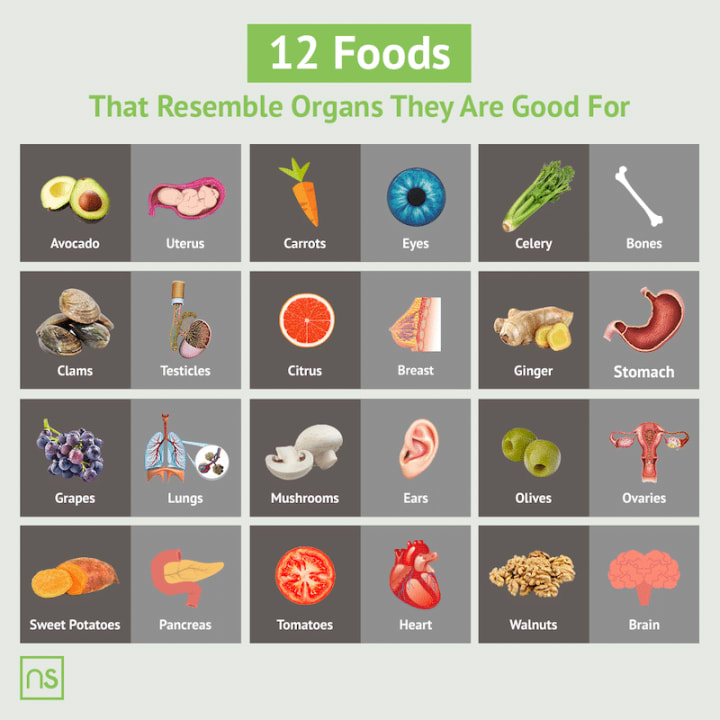
About the Creator
Amira
Just a writer..songwriting is my specialty! I'm a bit controversial but someone has to fix the narrative..
Enjoyed the story? Support the Creator.
Subscribe for free to receive all their stories in your feed. You could also pledge your support or give them a one-off tip, letting them know you appreciate their work.






Comments (1)
Hey, just wanna let you know that this is more suitable to be posted in the Longevity community 😊